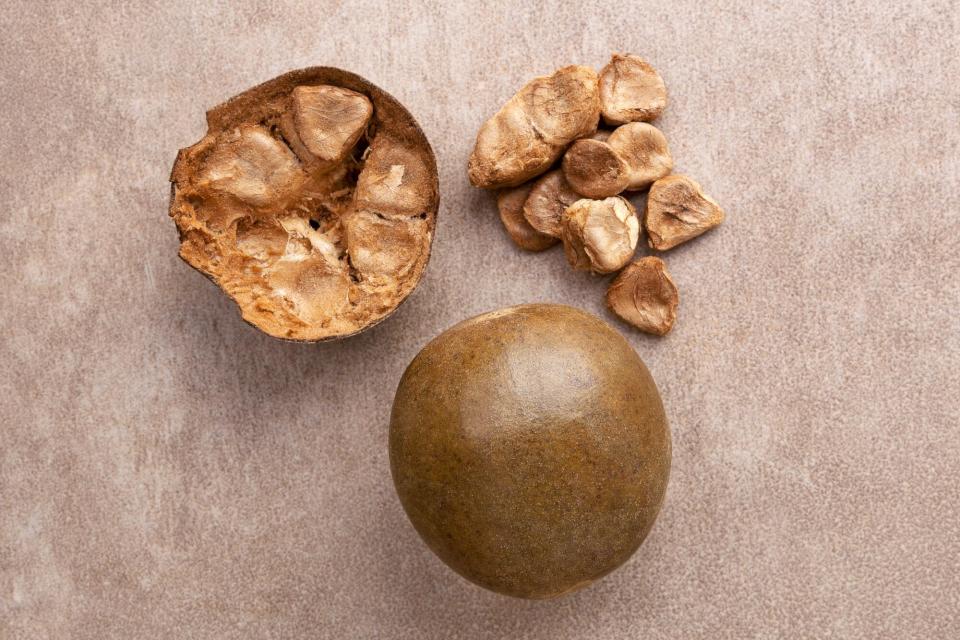What Is Monk Fruit Sweetener? Here's What You Need to Know About the Sugar Substitute, Including How to Use It at Home
If you haven't encountered monk fruit sweetener on an ingredient label just yet, give it time. It's popping up in everything from organic chocolate bars to canned lattes and even cookie mixes, but what is it and should you be using it? Here's what you need to about this trendy ingredient.

eskymaks / Getty Images
What Is Monk Fruit?
Also known as luo han guo or siraitia grosvenorii, monk fruit is a gourd native to southern China and northern Thailand. Small and green, it looks a bit like a tiny melon. It's very sweet, and while the fruit can be used to make jam or jelly, it's mainly used as a sweetener. The fresh fruit is rarely available outside of the regions where it is grown. Dried monk fruit can be found in the U.S. some Asian supermarkets.
Like stevia, monk fruit is a natural sweetener, although unlike stevia (which comes from a leaf extract) monk fruit sweetener is made from the extract of the fruit. Monk fruit sweetener is roughly 200 times sweeter than sugar and has zero calories or carbs, it offers a sugary punch without some of the potential health issues associated with sugar and is often now used in place of sugar. It does, however, have an after-taste that people tend to either like or hate.
Are there Benefits to Using It as a Sweetener?
Monk fruit has been used for centuries as a part of traditional Chinese medicine thanks to its anti-inflammatory properties; because it doesn't increase blood sugar levels, it's generally safe for those with diabetes.
Where to Buy Monk Fruit Sweetener
The sweetener is typically available at big box stores, including Target and Walmart, and through Amazon. Shop carefully, reading labels closely because different brands have differing levels of sweetness and different inert ingredients; some are formulated to allow you to replace sugar at a ratio of 1:1, while with others you'll need to use only a quarter of monk fruit sweetener to replace sugar.
How to Use It
Bakers can use monk fruit sweetener to replace sugar or honey for vegan baked goods. It can also be added to sweeten smoothies and other hot or cold beverages, or used when making homemade jams.

